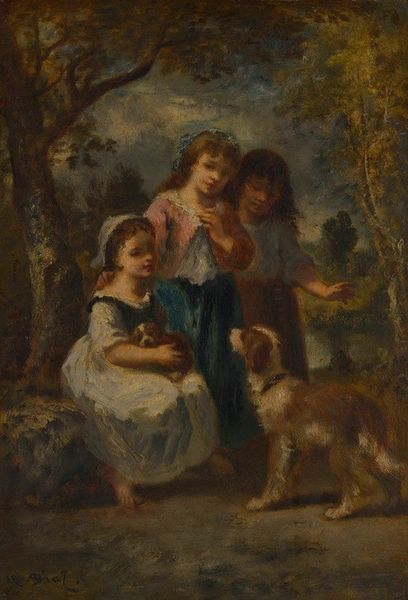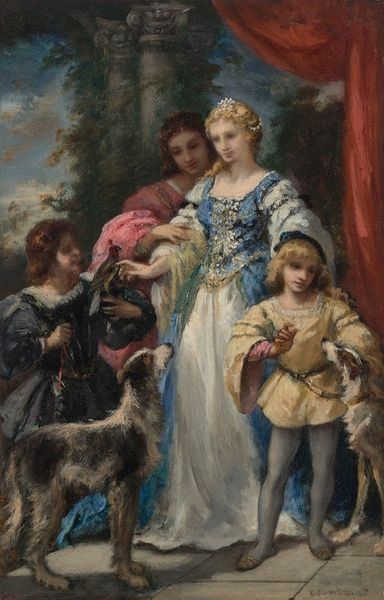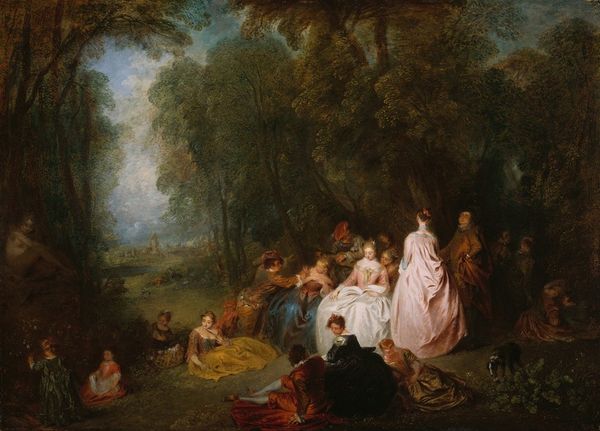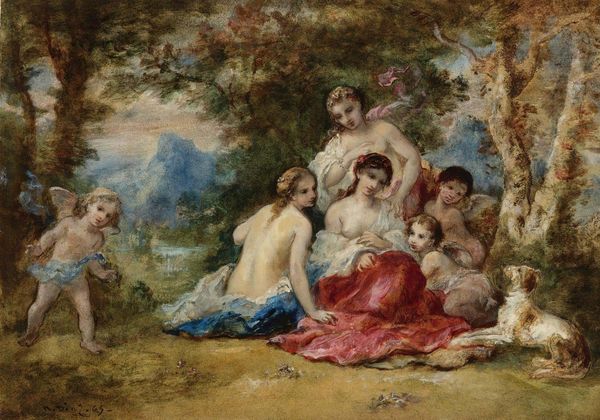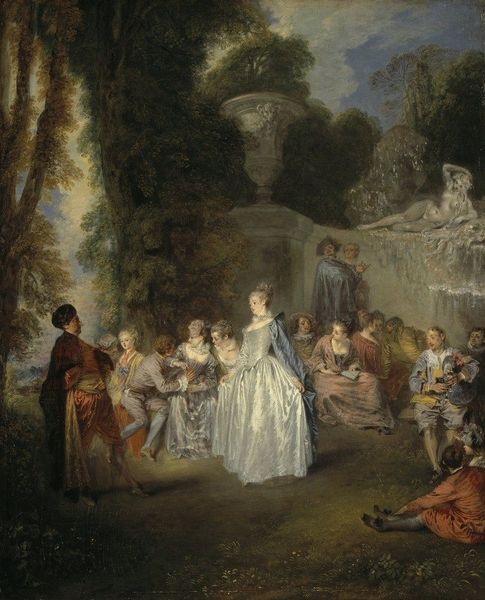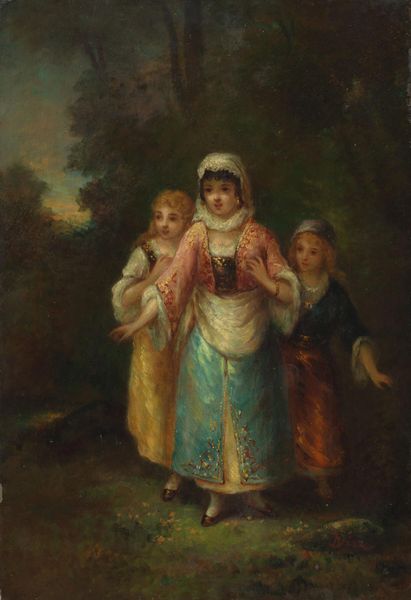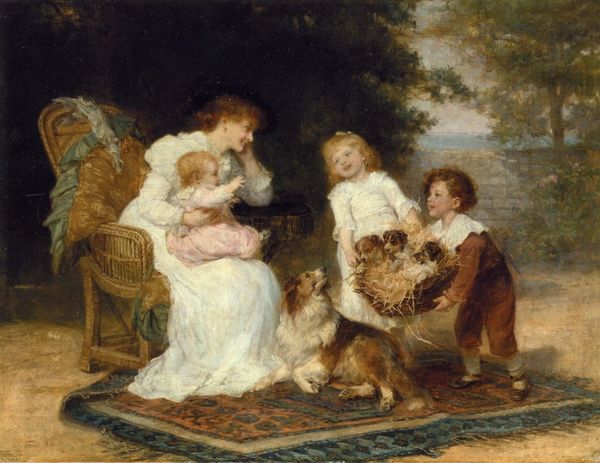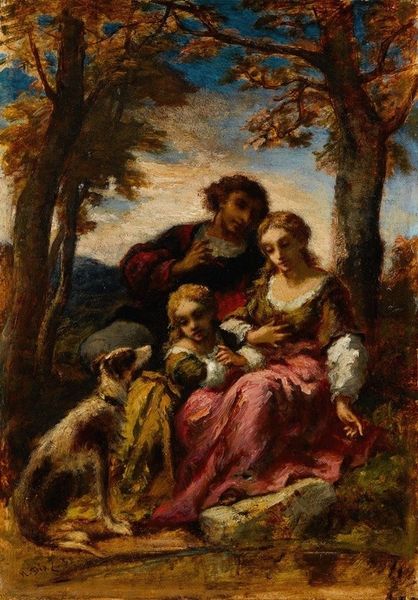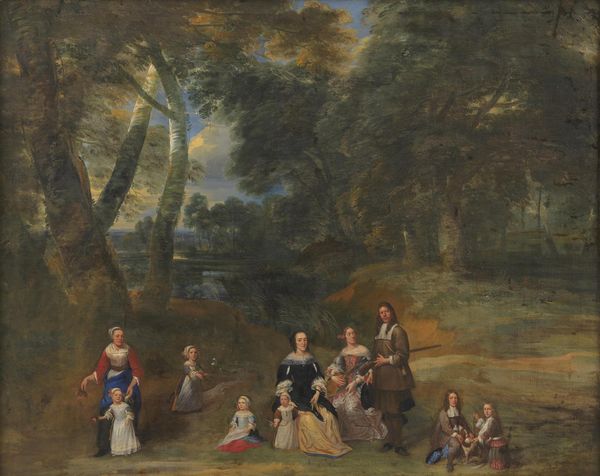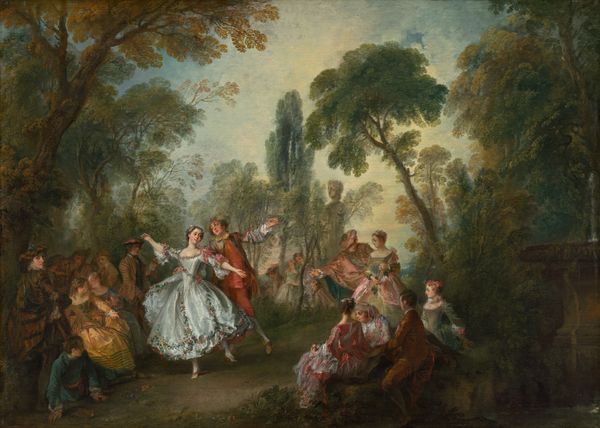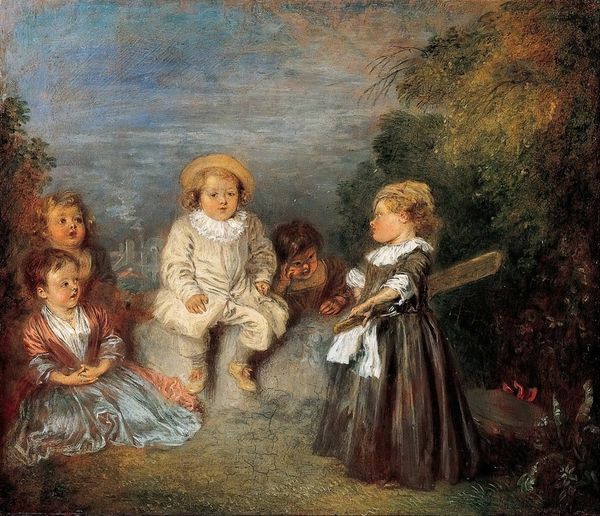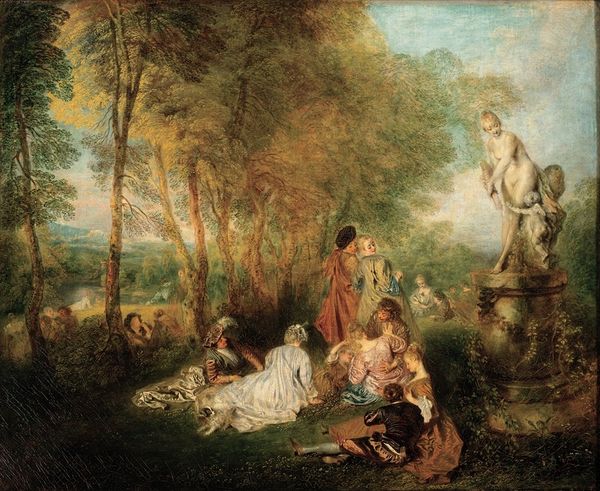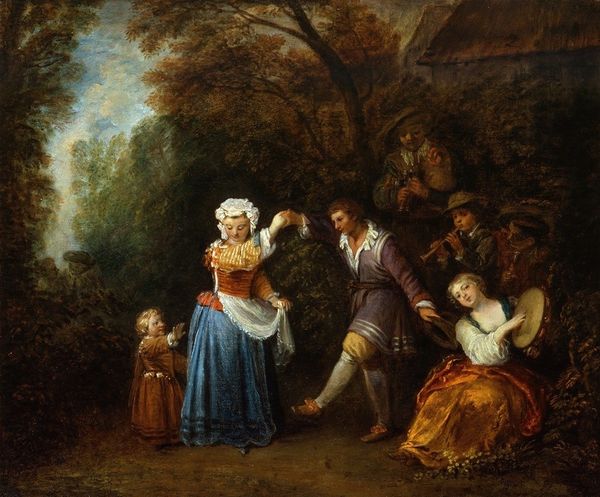
Copyright: Public Domain: Artvee
Editor: This is "Promenade à la robe bleue," painted in 1870 by Narcisse Virgilio Díaz. It's an oil painting depicting a group of people in what looks like a forest. I'm struck by how the artist captures the fabrics of their clothing. What details stand out to you? Curator: The clothing itself tells a fascinating story. Look at the detail: the evident cost of materials like the probable silk and the extensive lace. The production of each garment demanded skilled labor, reflecting the class structures of the era and consumption habits. Diaz highlights the opulence. What does that opulence signify for you? Editor: It feels like a display of wealth, almost theatrical. Do you think Díaz is making a comment on this display? Curator: Absolutely. Consider the painting's context: the rise of industrial capitalism. This family's garments would’ve been crafted by someone - or even many someones – in a workshop, or perhaps even outsourced by family members from their own houses in forms of 'sweated labor' and ‘putting-out’ production systems in cities like Lyon or Paris, but it’s work which remains utterly invisible to these protagonists enjoying their promenade in the forest. The materiality points to unseen labor relations. It seems that Díaz critiques the separation of production and consumption within newly developed capitalist economies of nineteenth century France. How does the landscape, rendered in such broad strokes, contrast with the carefully depicted clothing? Editor: The rough, almost unfinished feel of the forest seems at odds with the refined figures. It emphasizes the artificiality of their presence in nature. Curator: Precisely. It suggests how the upper classes used natural spaces for leisure, a space molded for their specific enjoyment and privilege – in a garment economy utterly at odds with its overt material display. The means of clothing production stands unseen, far away from the leisure. So how does analyzing materiality and its contexts change your reading of the artwork? Editor: It’s given me a completely new perspective. I hadn’t considered the economic implications embedded within the painting before. Curator: Exactly. Examining materiality opens up avenues for understanding social power and economic systems embedded in art. It moves beyond the purely aesthetic appreciation.
Comments
No comments
Be the first to comment and join the conversation on the ultimate creative platform.
